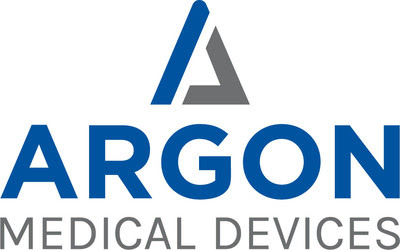More than a year after COVID-19 began sweeping the world, abruptly cutting short her Peace Corps stint, Cameron Beach is once again living in rural Malawi — this time on her own dime.
The Peace Corps, a U.S. government program marking its 60th anniversary this year, boasted 7,000 volunteers in 62 countries in March 2020. They were given little time to pack before being put on a plane and sent back to the United States that month.
“It was especially painful for me because I was given 24 hours to leave a place that I’d called home for almost two years,” Beach said during a recent video call from her home in Malawi, a landlocked country in southern Africa.
Beach was trained to speak Chichewa and had been teaching English at the Mkomera Community Day Secondary School in Dedza, located in a compound about 40 kilometers southeast of the capital, Lilongwe. The 25-year-old Greenville, South Carolina, native paid her own way back to her post nine months after evacuation and is living on savings, but says she would “absolutely” rejoin the Peace Corps if it became possible.
It might be: The organization hopes to begin returning volunteers to the field late this year or early next year.
While Peace Corps volunteers would be required to be vaccinated, sending them back will depend on the situation in individual countries. Initially, about 2,400 evacuated volunteers expressed interest in going back and there are about 10,000 applications on file, Acting Peace Corps Director Carol Spahn told The Associated Press.
“Immediately after the evacuation we had tremendous interest from volunteers who were evacuated in returning to their country of service,” Spahn said. “Clearly, as time goes on, you know, people do move on with their lives, but I will say we have a robust pipeline of both people who were evacuated as well as those who were invited, but were unable to go and those who are expressing new interest.”
How soon they can be sent overseas depends on the worldwide fight against the virus, complicated by the recent emergence of the more transmissible delta variant and the slow rollout of vaccines in developing countries — many of which host Peace Corps programs.
Spahn estimates it will be several years before the Peace Corps is back to its full strength. After all, while volunteers in select countries had been evacuated before, March 2020 marked the first time since the organization was founded by President John F. Kennedy that it had to evacuate all its volunteers at the same time.
Since its creation in 1961, more than 240,000 Americans have served as Peace Corps volunteers in scores of countries. The goal is to help the countries meet their development needs with a wide variety of programs — from education to health and agriculture programs — while helping promote a better understanding of Americans.
Typical service lasts two years after a training period, the length of which depends on the country and the program. During the pandemic most Peace Corps staff, both U.S. citizens and local hires, remained in place and, in some cases, kept up some programs.
Some former volunteers even worked remotely on development projects from the United States, receiving a small stipend for their work.
Heading back overseas is nonetheless a daunting undertaking between the required training and rebuilding of programs. Areas that have few returning volunteers will also lose the institutional, cross-cultural and local knowledge typically passed on by departing volunteers to their successors.
It’s not just the Peace Corps that has had to recall thousands from remote reaches of the globe and navigate the aftermath.
The Church of Jesus Christ of Latter-day Saints had to send home about 26,000 missionaries tasked with recruiting new members to the faith known widely as the Mormon church. Many pivoted to doing missions in their home countries with a focus on online work.
In November, the church began sending missionaries back into the field and, in June of this year, the church reopened its missionary training centers in Utah, the Philippines and Mexico.
All missionaries from the United States who serve overseas are required to be vaccinated, said church spokesperson Sam Penrod. Missionaries who do not want to be vaccinated will be assigned to missions in their home countries.
“The church is taking a careful approach when assigning missionaries outside of their home country, based upon local conditions and following the guidance of government and health officials,” he said in an email.
As time goes by, potential recruits and returnees are moving on.
Cullen O’Donnell, 25, originally from Mentor, Ohio, served two years with the Peace Corps in Ecuador teaching English and then extended for a third year. He was planning another year, working on the Galapagos Islands, when COVID-19 hit.
He’d still like to go back — “then again with Peace Corps it’s very vague: ‘Yeah we’re hoping to get back to the field,’ but it keeps getting pushed back.”
So he’s getting on with his life. He now has a fulfilling job at a school for at-risk students in Pennsylvania and was just accepted to graduate school.
The Peace Corps has been accepting new applications throughout the pandemic, but in June the agency began planning for a return to Belize after the government there asked for volunteers who could help local schools recover from the pandemic’s disruptions.
But there is no indication when the first trainees would be sent to the tiny country tucked between Mexico and Guatemala.
A few volunteers refused to be evacuated but their Peace Corps service was ended, Spahn said. Despite their truncated service, volunteers are eligible for the variety of benefits typically afforded those who complete the two years — including resettlement payments, preferred hiring status for federal jobs and special scholarships.
But those former volunteers — like Beach — could help seed the revived Peace Corps, Spahn said.
Beach hadn’t been able to say goodbye. Her students had missed her.
“The time when Madam Beach left Malawi, lots of things went wrong especially in our class,” said Aness Leman Filimoni, who is in her last year of high school. “Madam Beach was teaching us English but when she left, the school could not find a suitable replacement.”
Beach is now teaching her usual two classes a day, five days a week. She’s also helping finish up a girls’ dormitory built in part with a Peace Corps grant.
Just before the pandemic, there were 108 volunteers in Malawi. Peace Corps Malawi Director Amber Lucero-Dwyer, who stayed, has seen a handful of former volunteers return on their own — although she thought most were visiting, not staying indefinitely as Beach is.
“We have tried to be as creative as possible to determine what can we do, what core Peace Corps work can we do in the absence of volunteers,” Lucero-Dwyer said.
Beach was originally sent to Malawi just weeks after her college graduation, and was scheduled to complete her service in August 2020; if she’s able to return to service, she doesn’t know how long the stint would last.
Regardless, she’s found her niche.
“It’s what I feel I’m meant to do,” Beach said of what she sees as the calling that drew her to the Peace Corps and ultimately Malawi. “It wasn’t a very windy road.”
Source: Voice of America



